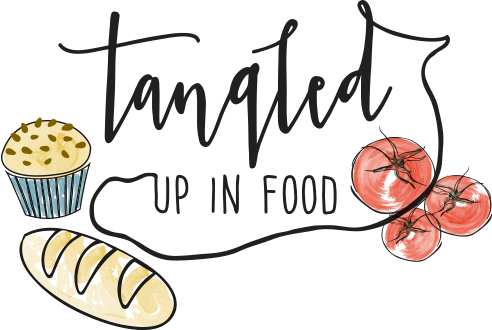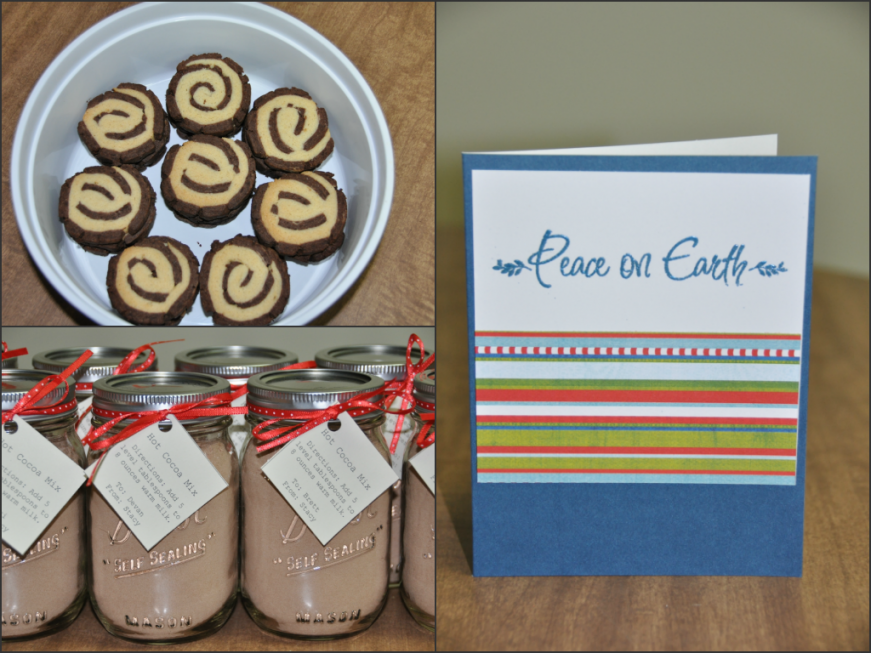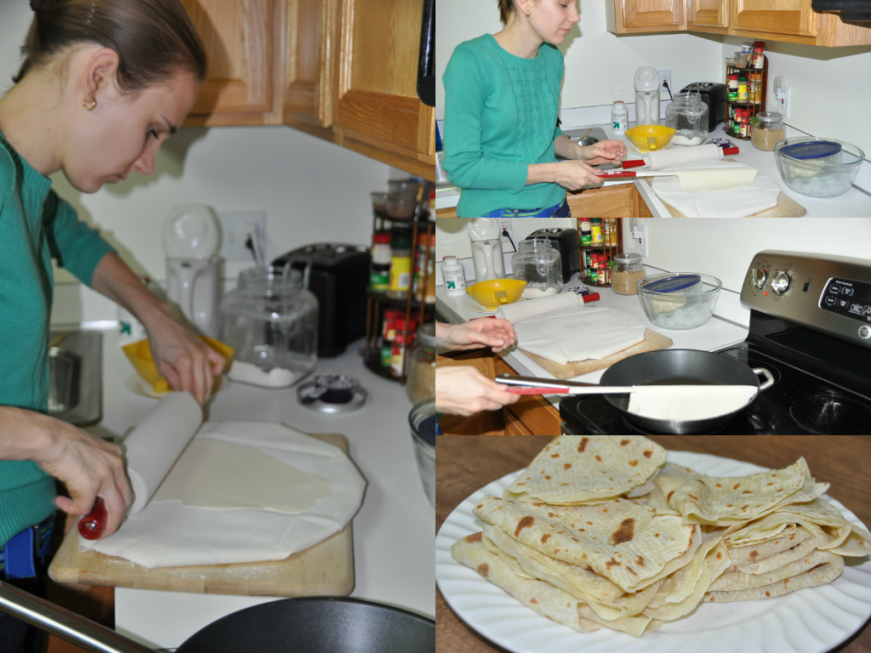As November marches on, the Nicollet Mall farmer's market has closed for the season, the last of the local apples have disappeared from the grocery store, and I had to unpack my warmest winter coat to cope with this morning's -1° Fahrenheit windchill. I've been getting reacquainted with non-CSA recipes like Tuna Noodle and Orzo Risotto with Sundried Tomatoes and Spinach (yes, I know that the risotto recipe uses bagged spinach imported from warmer climes, but I just can't handle six to eight months of root vegetables). Even though I swore that I wouldn't do anything Christmas related until after Thanksgiving, my resolve crumbled under the daily onslaught of Christmas merchandise, the Christmas lights lining Nicollet Mall, radio and television Christmas-themed commercials, and my own husband playing Christmas music on the living room stereo. Besides making hand-stamped Christmas cards, I've made homemade hot cocoa mix as Christmas gifts for my co-workers and a batch of chocolate-vanilla pinwheel cookies for the annual Christmas cookie exchange (thanks to a crumbly layer of chocolate dough they ended up looking like an abstract expression of the pinwheel concept instead of spirals).
But the most important thing that I've done in November, besides my important adult responsibilities like going to work and checking my car's oil level, has been learning how to make lefse. For the uninitiated, lefse is a very thin Norwegian flatbread. Being of Finnish/German/Czech/Slovak/British descent, lefse isn't in my DNA, but I love it anyway. I attempted to make lefse during the Brooks Bakes Bread project, but my lefse wasn't rolled thin enough to qualify as legitimate. Although I am a mostly self-taught home cook and baker, there are some skills that I struggle with learning from a book. Lefse-making seemed to be one of them, so I spent a Sunday afternoon learning from master lefse maker Cheryl at Ingebretsen's Scandinavian Gifts in Minneapolis.
Because I am a complete novice at this, having made lefse exactly twice, I don't feel qualified to post a play-by-play account of the lefse making process. If you live in Minnesota, Wisconsin, or another place with high concentrations of Norwegian-Americans, you may be able to track down a local lefse-making class. If you're adept at learning new cooking techniques from books, my instructor Cheryl recommended The Last Word on Lefse and The Great Scandinavian Baking Book. And for visual learners, if you can't make it to a class in person, Ingebretsen's lefse making class is available on DVD.
As frequent readers may already know, I am not a big fan of single-purpose kitchen gadgets. However, I did need to invest in a few items for making lefse: a potato ricer (the mashed potatoes that go into the dough have to be perfectly smooth); a textured rolling pin, pastry cloth, and rolling pin cover to ensure that the lefse doesn't stick to the rolling surface or the skillet; and a lefse stick to transport the rolled-out lefse dough and turn it as it cooks. You can also buy pastry rolling boards and lefse griddles, but I improvised with a pizza stone covered with a pastry cloth and a large non-stick skillet. The ingredients are simple: potatoes, flour, butter, and salt. It takes a bit of finesse and a lot of time to roll out and fry the dough. But eating my homemade lefse made me feel like a culinary rock star (so much so that I ate the majority of the batch in one sitting).



Share your thoughts
Impressive!
Look's great just like a pro. You seem to have a head start on the holiday season. Makes me want to try some lefse.